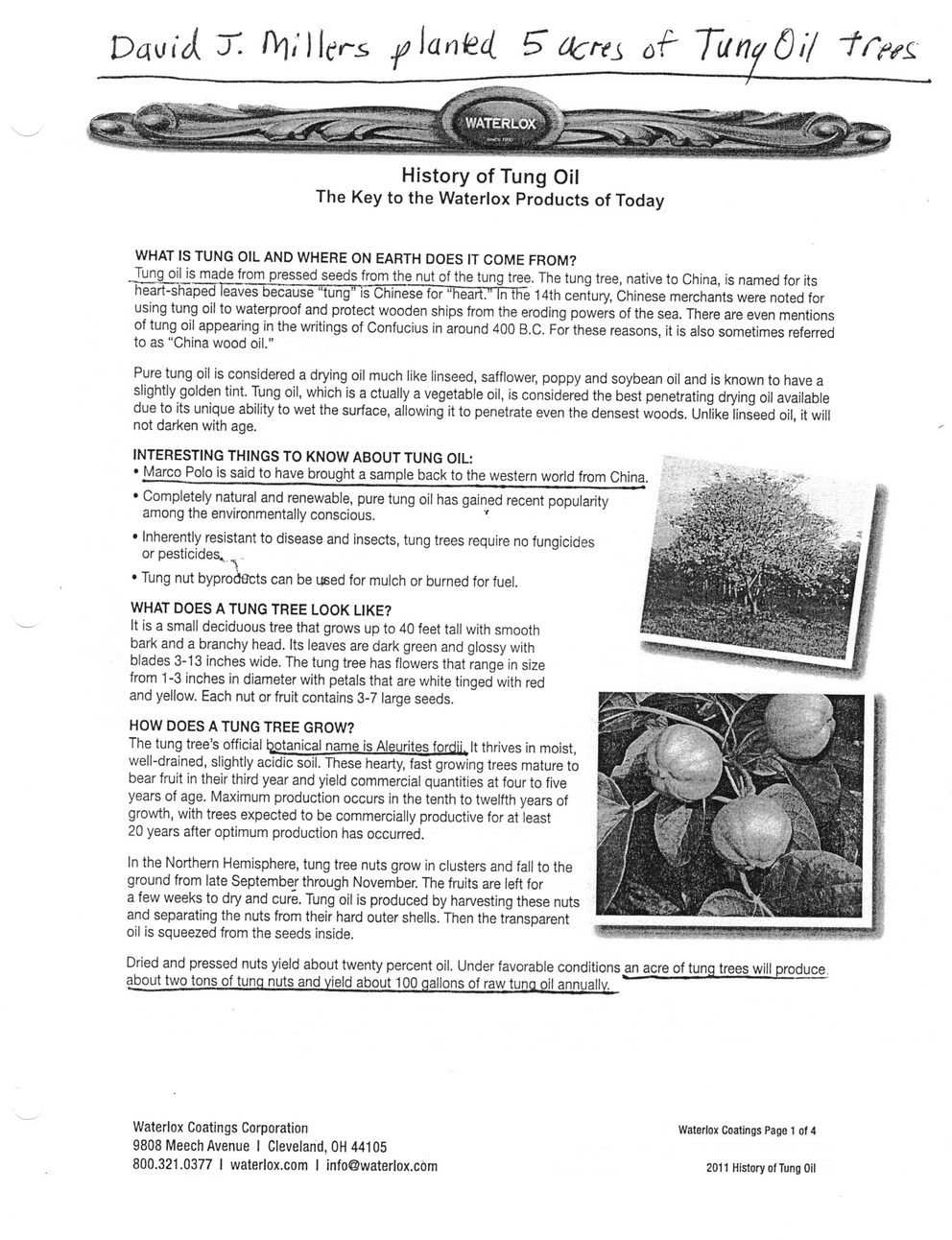This text was obtained via automated optical character recognition.
It has not been edited and may therefore contain several errors.
David J? fyil lc~s ylaniej S Pens of TunfQi/ '7?VTv?X History of Tung Oil The Key to the Waterlox Products of Today WHAT IS TUNG OIL AND WHERE ON EARTH DOES IT COME FROM? Tung oil is made from pressed seeds from the nut of the tung tree. The tung tree, native to China, is named for its heart-shaped leaves because ?tung? is Chinese for ?heart.? In the 14th century, Chinese merchants were noted for using tung oil to waterproof and protect wooden ships from the eroding powers of the sea. There are even mentions of tung oil appearing in the writings of Confucius in around 400 B.C. For these reasons, it is also sometimes referred to as "China wood oil." Pure tung oil is considered a drying oil much like linseed, safflower, poppy and soybean oil and is known to have a slightly golden tint. Tung oil, which is a dually a vegetable oil, is considered the best penetrating drying oil available due to its unique ability to wet the surface, allowing it to penetrate even the densest woods. Unlike linseed oil, it will not darken with age. INTERESTING THINGS TO KNOW ABOUT TUNG OIL: ? Marco Polo is said to have brought a sample back to the western world from China ? Completely natural and renewable, pure tung oil has gained recent popularity among the environmentally conscious. 1 ? Inherently resistant to disease and insects, tung trees require no fungicides or pesticides* ? Tung nut byproducts can be used for mulch or burned for fuel. WHAT DOES A TUNG TREE LOOK LIKE? It is a small deciduous tree that grows up to 40 feet tall with smooth bark and a branchy head. Its leaves are dark green and glossy with blades 3-13 inches wide. The tung tree has flowers that range in size from 1 -3 inches in diameter with petals that are white tinged with red and yellow. Each nut or fruit contains 3-7 large seeds. HOW DOES A TUNG TREE GROW? The tung tree?s official botanical name is Aleurites fordii. It thrives in moist, well-drained, slightly acidic soil. These hearty, fast growing trees mature to bear fruit in their third year and yield commercial quantities at four to five years of age. Maximum production occurs in the tenth to twelfth years of growth, with trees expected to be commercially productive for at least 20 years after optimum production has occurred. In the Northern Hemisphere, tung tree nuts grow in clusters and fall to the ground from late September through November. The fruits are left for a few weeks to dry and cure. Tung oil is produced by harvesting these nuts and separating the nuts from their hard outer shells. Then the transparent oil is squeezed from the seeds inside. Dried and pressed nuts yield about twenty percent oil. Under favorable conditions an acre of tung trees will produce about two tons of tung nuts and yield about 100 gallons of raw tuna oil annually. Waterlox Coatings Corporation 9808 Meech Avenue I Cleveland, OH 44105 800.321.0377 I waterlox.com I info@waterlox.com Waterlox Coatings Page 1 of 4 2011 History of Tung Oil

Amish 19